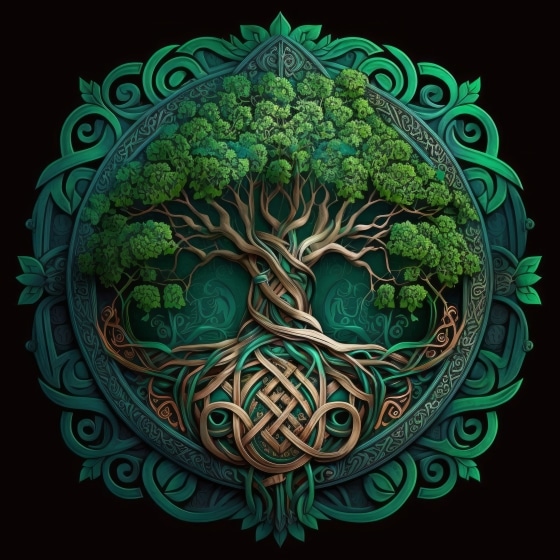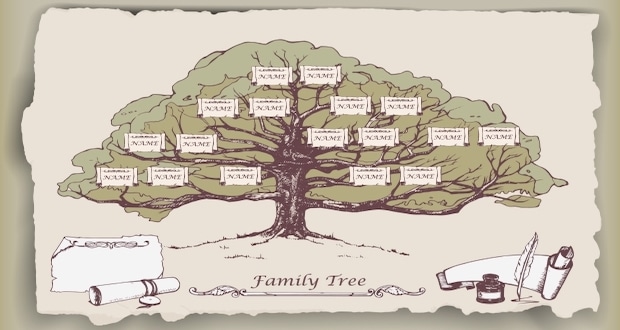Understanding Family Trees And Their Significance
Family trees are charts or diagrams that illustrate the relationships between people. They’re one of the main tools used in researching your ancestry.
They help to make comprehension of convoluted relations a lot easier. They’re also great for showing off all your research findings, like photos and dates.
The Roots of Family Trees
Family trees have long played a vital role in traditional societies worldwide. These complex relationships trace ancestry and provide a sense of identity, belonging, and continuity.
Traditionally, family trees focus on direct descendants of a common ancestor. This includes parents, grandparents, great-grandparents, siblings, aunts, uncles, and cousins.
However, it is possible to branch out beyond this, and many choose. This may include incorporating stepparents, stepchildren, half-uncles and aunts, adoptive cousins, or other non-traditional relatives.
When embarking on genealogy research, individuals often seek resources with family trees explained, offering clear guidance on constructing and understanding intricate family connections and histories.
Building a family tree is an excellent way to introduce children to genealogy and the importance of preserving history. It can also help children understand how they fit into their world and the more extensive connections that make us all one family.
Aside from tracing family history, family trees can help children learn about basic biology and genetics. They may discover they have the same eye or hair color as some of their relatives or a genetic predisposition to certain diseases.
For adults doing genealogical research, building a family tree can be an effective way to organize the results of their work. This organization will enable them to easily view the results of their work and help them determine if any additional research needs to be conducted.
The Ascending Tree
Trees are symbolically crucial to spiritual life, representing immortality. Many ancient cultures, such as Celtic, Norse, and Mesopotamian mythology, include the idea of a Tree of Life in their religious practices.
Sometimes, these trees serve as an Axis Mundi – a connection between the physical and spiritual worlds. This is because they have roots that go into the underworld, a trunk that stays in the earthly plane, and branches that reach into the heavens.

In addition to immortality, the Trees of Life symbolize the beauty of uniqueness. Like a tree, no two people are exactly alike. Your unique upbringing, experience, and ancestry make you a one-of-a-kind human, just as no two trees are identical. Like humans, each tree shapes and grows differently according to its environment.
The ancient Celts revered the power of the Tree of Life, as they called it, which is why they would leave a tree in the middle of their fields for generations to gather under. The modern world is also beginning to recognize this symbol’s power, as many companies are using the Tree of Life to promote sustainability and eco-friendly practices.
For example, a new technical outdoor apparel company is trying to capture the first-ever footage inside the canopies of champion trees (the largest of their species). This effort will help preserve and spread awareness about these remarkable specimens.

The Descending Tree
In genealogical research, two distinct tactics are used to trace ancestry. Ascending genealogy involves starting with one specific person and then going back through the generations, finding descendants from that point.
Descending genealogy, on the other hand, begins with a person’s last known ancestor and then finds all of that person’s descendants. It is often considered more effective than ascending genealogy at tracking down cousins and distant relatives.
The following rule defines the descending tree: Any node n in a tree T is the parent of any node on the path (i,j) from root r to n. The parent of a node is the unique node on the way to that node from root r.
Children of a node are all the nodes on the path from that node to root r. A node is an ancestor of a child only if it has a parent that is also a child of the child.
For this reason, it is essential to consider your specific expectations before choosing a strategy for your research.
The Fan Tree
The family tree is one of the most common and well-known representations of genealogy. It is a diagram (that often looks a little like a tree) that shows all of your relatives through several generations.
When you build your family tree, you will probably want to include the basic information everyone should know – where they were born, when they were born, their parents’ full names and maiden names, their children, and their spouses. This information is called your pedigree and is an excellent place to start.
The next step is to work backward with your ancestors. This is where the fan chart comes in handy. This is a half-circle chart with concentric rings. It starts with the subject at the center, and each successive round shows their maternal or paternal grandparents. This type of chart is helpful because it can help you locate missing ancestors or identify miscategorized relationships.
In addition to the ancestor and descendant trees, there are other types of family relationship charts. For example, an alternative to the family tree that medical professionals can use to understand genetic disease patterns.
It also helps to see how a patient’s environment and life events could have influenced their family history. It’s a crucial tool aiding patients in managing emotional distress and fostering a connection to their past.
Studying your family history may surprise you. Maybe you’ll develop a deep connection with a past relative, discover a new exciting story, or find a perfect baby name. You’ll be surprised by what your family legacy can teach you. Here’s a simple infographic to help you research your family tree.







Really very good article
Thank you Eva for the feedback.
Gerardo